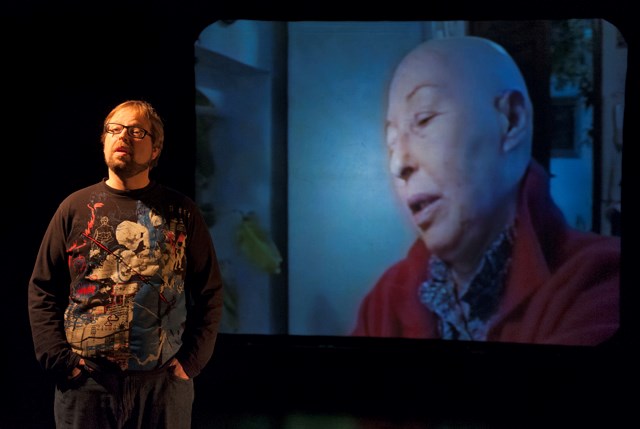If there was one word to describe the play How to Disappear Completely, currently running at Richmond's Gateway Theatre, it would be honest — honest and genuine.
Gone are the typical theatrical conventions that aim, but often fail, to suspend our disbelief. What stands, instead, is a remarkably simple, yet beautifully crafted and profoundly genuine show about one man’s documentation of his mother’s doomed battle with lung cancer.
But don’t run for your hankie yet, that’s just the outline. Within that frame is a funny, poignant and disarmingly honest story of a man and the many aspects of his life: the fact he’s single, and at 41 is still looking for that special someone; the fact he’s competitive and fought with his sister; the fact he has a best friend named Ari, who is a soulmate and struggles with depression — Ari also figures in a truly hilarious story he tells about travelling to a remote island and meeting an amorous fish.
How to Disappear, created and performed by Itai Erdal, is part documentary, part storytelling and part lesson in theatrical lighting design.
The stage is bare throughout the 60-minute production, save for a stool Erdal moves around and occasionally sits on.
Erdal speaks directly to the audience, frequently drawing back a curtain behind him to show clips of a documentary he had intended to make about his mother’s disease and the question of ending her life.
He tells us he was living in Canada at age 25 when he got a call from Israel, where he grew up, with news that his mother had nine months to live. Video camera in hand, he headed back to Israel.
The documentary never came into being, what has emerged instead is this original blend of film, storytelling and light.
Erdal works as a theatre lighting designer. In the show, he not only uses lighting cues to tell the tale, he explains to the audience how the lights work, which ones create what kind of emotional effect. Hence, we learn about the “shin buster,” a dramatic side light that sits on the floor off stage, which actors frequently walking into busting their shins.
Revealing the techniques of theatrical lighting, coupled with the intimate, home-movie quality of the film and Erdal’s honest self reflection, creates a powerful drama full of magic. But, ironically, the magic is in the exposure, not the illusion.
The final result is a remarkably uplifting show, despite the death, disease and depression. Shining a light on all that, facing it with honesty, humour and a clever sense of timing turns what could be a downer into inspiration.
How To Disappear Completely runs in the Gateway’s Studio until Nov. 22



